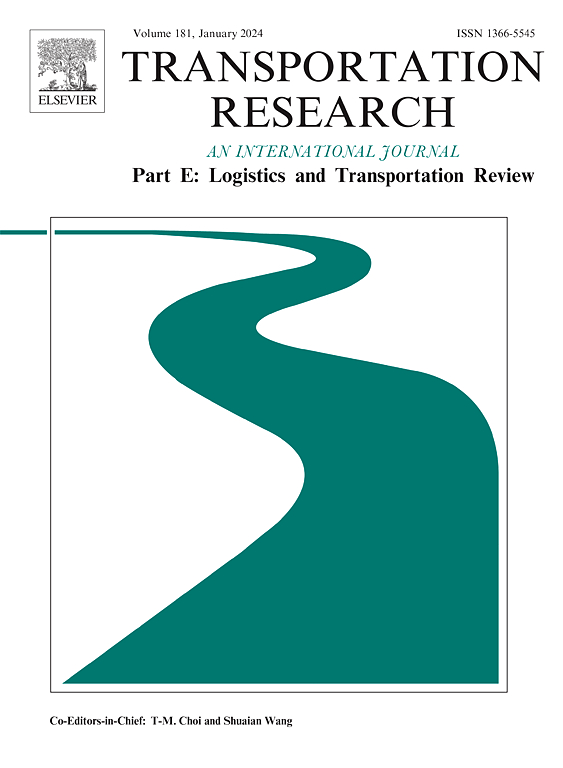考虑到元宇宙技术,什么时候应该选择内部或外部主播进行直播?
IF 8.3
1区 工程技术
Q1 ECONOMICS
Transportation Research Part E-Logistics and Transportation Review
Pub Date : 2025-05-19
DOI:10.1016/j.tre.2025.104174
引用次数: 0
摘要
然而,直播渠道的出现改变了传统的在线渠道,并为制造商提供了机会。我们考虑一个制造商与一个在线平台合作,该平台有两个销售渠道:直播和代理渠道。制造商可以选择内部或外部主播在直播频道中介绍其产品。外部锚收取佣金,而内部锚不收取佣金。此外,我们还结合了直播渠道的三个特点,即“蚕食效应”、“长效效应”和“直播互动效率”。我们发现,无论是否采用虚拟现实技术,在低(高)的实时交互效率下,邀请外部锚比部署内部锚给制造商带来更多(更少)的利润。然而,随着长期效应的增加,外部锚首先会使平台降低,然后升高,最终比部署内部锚的利润更低。此外,无论采用哪一种锚点,在低(高)的实时交互效率下,采用虚拟现实技术的制造商比不采用虚拟现实技术的制造商利润更低(更高)。然而,与不采用元境技术相比,采用元境技术给平台带来的利润更多(更少),单位元境支持的收益也更低(更高)。本文章由计算机程序翻译,如有差异,请以英文原文为准。
When should the internal or external anchor be selected to conduct live-streaming considering metaverse technology?
The emergence of live-streaming channels has changed the traditional online channels though, and has opened up opportunities for manufacturers. We consider a manufacturer cooperating with an online platform operating with two selling channels: live-streaming and agency channels. The manufacturer can choose an internal or external anchor to introduce its products in the live-streaming channel. The external anchor charges a commission whereas the internal anchor does not. In addition, we incorporate three features of the live-streaming channel, namely “encroaching effect”, “long-term effect”, and “live-interaction efficiency”. We reveal that no matter whether to adopt metaverse technology, inviting an external anchor brings the manufacturer more (less) profit than deploying an internal anchor at a low (high) live-interaction efficiency. However, inviting the external anchor first brings the platform lower, then higher, and finally lower profit than deploying the internal anchor as the long-term effect increases. In addition, no matter which anchor is deployed, adopting metaverse technology brings the manufacturer lower (higher) profit than that without metaverse technology at a low (high) live-interaction efficiency. However, adopting metaverse technology brings the platform more (less) profit than that without metaverse technology at a low (high) unit metaverse-enabled benefit.
求助全文
通过发布文献求助,成功后即可免费获取论文全文。
去求助
来源期刊
CiteScore
16.20
自引率
16.00%
发文量
285
审稿时长
62 days
期刊介绍:
Transportation Research Part E: Logistics and Transportation Review is a reputable journal that publishes high-quality articles covering a wide range of topics in the field of logistics and transportation research. The journal welcomes submissions on various subjects, including transport economics, transport infrastructure and investment appraisal, evaluation of public policies related to transportation, empirical and analytical studies of logistics management practices and performance, logistics and operations models, and logistics and supply chain management.
Part E aims to provide informative and well-researched articles that contribute to the understanding and advancement of the field. The content of the journal is complementary to other prestigious journals in transportation research, such as Transportation Research Part A: Policy and Practice, Part B: Methodological, Part C: Emerging Technologies, Part D: Transport and Environment, and Part F: Traffic Psychology and Behaviour. Together, these journals form a comprehensive and cohesive reference for current research in transportation science.

 求助内容:
求助内容: 应助结果提醒方式:
应助结果提醒方式:


